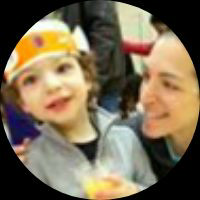What to do outside of therapy?
Our children spend countless hours in various therapies – whether that’s PT, OT, speech therapy or any other therapy that will provide assistance. The time that we spend with them at home – is just that, time at home. . . and by home I really mean any and all quality time spent with your kid. When our kids are in a particular therapy session, the time tends to be very structured and controlled; however, the activities we do with our kids outside that setting is a fantastic opportunity to put into practice what they work so hard on in therapy.
Here are 10 great ways to engage your child in an active way outside the therapy room... the key is always make it fun so they don’t even know they are doing the work!
Tip 1: Let your child explore their surroundings
I think we can all remember our own parents telling us not to climb on couches or jump on beds, and while I wouldn’t advocate letting your kid run completely wild, allowing your child to challenge him or herself at the expense of your sofa doesn’t hurt – it allows them to continue developing their gross motor skills and understand just how capable they are. Who doesn’t love jumping on the bed?
Tip 2: Take the stairs
Everyone has access to stairs and if your child is able, stairs are a great way to build up the leg muscles, improve coordination and foster independence.
Tip 3: Allow them to help
We all need a little help around the house, and for some reason, little kids think its fun to help unpack groceries, wash and dry dishes, and attempt to sweep a floor. Take advantage while it lasts! There are so many different ways to accomplish any one thing and these mundane tasks allow our kids to think outside. They learn that that with a bit of creativity and persistence, they can do anything – from the ordinary to the extraordinary.
Tip 4: Sign up for an activity or sport
Getting involved in a new sport or hobby allows your child to be active in a non-therapy setting. Try and expose them to any and all activities that holds their interest. With the right instruction and encouragement, your child will learn new skills, understand how to adapt and be successful, and gain confidence.
Tip 5: Take it outside
The park or playground is a terrific opportunity to work on your child’s gross and fine motor skills …and its pretty fun too! The park is also a safe place where they can continue fostering a sense of independence and confidence. Gymborees are also great!
Tip 6: Kitchen Aid
Kids are always eager to help bake some cookies or decorate a homemade pizza. Helping out in the kitchen improves fine motor skills, engages both hands, and allows for sensory input – anything from pouring ingredients in, holding the bowl in one hand and mixing in the other, kneading down and rolling it out, creating shape…get them an apron and they are good to go!
Tip 7: Smart Toys
Think outside the box when it comes to buying your kids toys. Ask yourself what will be fun and beneficial so your child will get some extra work in without even knowing it!
Tip 8: Sensory Input
As if your kids need more toys…play-doh, kinetic sand, bubbles, soap and even shaving cream are all great to increase sensory input and develop fine motor skills!
Tip 9: Make the most of screen time
Ipads, computers, tablets or phones... Like it or not, our kids are growing up with these things, but there are some really great apps and games that are helpful and beneficial. Additionally, screen time is an excellent opportunity to get in some extra stretching and exercises while your child is distracted by some cartoon.
Tip 10: Work with weaknesses to make it stronger
Whatever particular challenge your child faces, make sure to incorporate it into their activities in a subtle way. For example if you child has weakness on his or her right side, place toys on the right side so they have to reach around and engage that side, while getting dressed put the right arm and leg in first, place their food on the right side…all of these small tricks allow your child to constantly relate to that side in a positive way and learn how to successfully function.

























